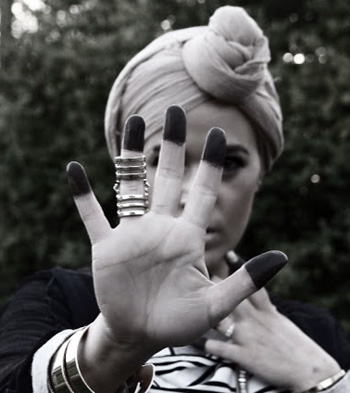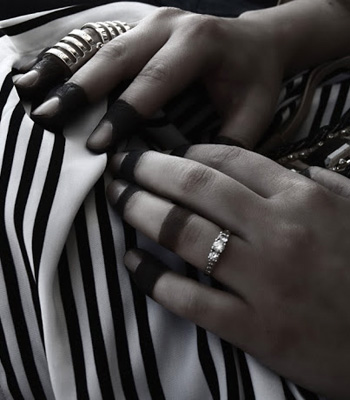Mehndi MadnessTM Blog
 Krysteen
Krysteen By now I'm sure you Mehndi Madness addicts have seen designs that incorporate dyed fingertips. We became curious as to where that comes from and what it means to the people who wear them. Through research, we found that dipped fingers can come with a ritual but are also worn as simple decoration. Traditionally, Indian dancers would stain their palms and fingertips with bold designs, like dipped fingers, in order to draw attention to their hands. It is also commonly applied as an alternative to nail polish. The only downside to wearing henna as nail polish is that it is permanent until the henna grows out and can take up to four months to do so.
By now I'm sure you Mehndi Madness addicts have seen designs that incorporate dyed fingertips. We became curious as to where that comes from and what it means to the people who wear them. Through research, we found that dipped fingers can come with a ritual but are also worn as simple decoration. Traditionally, Indian dancers would stain their palms and fingertips with bold designs, like dipped fingers, in order to draw attention to their hands. It is also commonly applied as an alternative to nail polish. The only downside to wearing henna as nail polish is that it is permanent until the henna grows out and can take up to four months to do so.
 Ritualistically, the Mountain Jews of Azerbaijan women dip their fingertips in henna during the henna ceremony, or Juhuri. A bowl of henna is prepared with a needle and silver coin in it to ward off the evil eye and bring prosperity. The bowl is passed around while each woman dips their fingertips in the henna, a blessing is said to the bride. Once all the women are dyed, it is the bride's turn. While she is dipping her fingertips in the henna, a prayer is said. A similar ceremony was practiced in Georgia before the early 20th century.
Ritualistically, the Mountain Jews of Azerbaijan women dip their fingertips in henna during the henna ceremony, or Juhuri. A bowl of henna is prepared with a needle and silver coin in it to ward off the evil eye and bring prosperity. The bowl is passed around while each woman dips their fingertips in the henna, a blessing is said to the bride. Once all the women are dyed, it is the bride's turn. While she is dipping her fingertips in the henna, a prayer is said. A similar ceremony was practiced in Georgia before the early 20th century.
Christian Armenians also practice a henna ceremony that involved all women in the bridal party, even children. The priest applies the henna to the women, the bride being last, into their palms and over their fingernails. Red fabric is then wrapped around each of the women's hands and tied around the wrists. The next day the fabric and the henna paste are removed. The designs are very simple within the Armenian culture, often using dipped fingertips.
